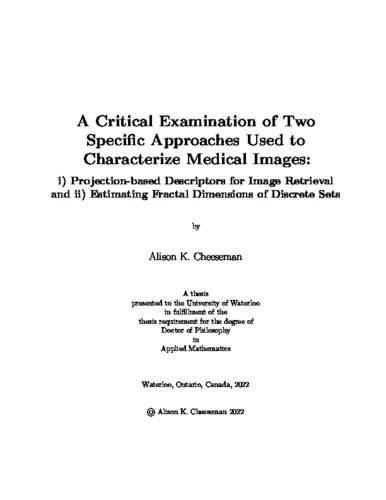| dc.description.abstract | In this thesis we provide a critical examination of two methods which are used to characterize medical images. Accordingly, this thesis is split into two main parts. First, we take a look at the problem of designing efficient, compact image descriptors for content-based image retrieval of digital histopathology slides. Our approach here is twofold, in that we propose a frequency-based approach to encoding projection gradients and we study the effect of separating histology slides into two colour components based on a typical staining protocol. Our frequency-based approach is shown to be more effective in terms of search performance and efficiency than the standard MinMax method of binary encoding often employed in the literature. Furthermore, we find that by separating histopathology images into their stain components, we see a significant improvement in search accuracy over the use of greyscale images, and comparable, and often superior performance to the use of three channel RGB colour images as inputs. The results in this part of the thesis not only stand on their own as a solution for image search, they can also be applied to improve the efficiency and performance of future research in this field.
In the second part of this thesis, we consider the use of fractal dimensions as a method to characterize vascular networks, and other branching structures such as streams, and trees. We discuss the self-similarity (or lack thereof) of branching structures, and provide a clear argument against the use of the typical methods, such as the box-counting and sandbox methods, to estimate fractal dimensions from finite images of branching networks. Additionally, local slopes are used as a tool to illustrate the issues with these approaches when they are applied to branching structures, such as computer-generated fractal trees and retinal vascular networks. Some alternative approaches are suggested which could be used for the characterization of complex branching structures, including vascular networks. | en |

